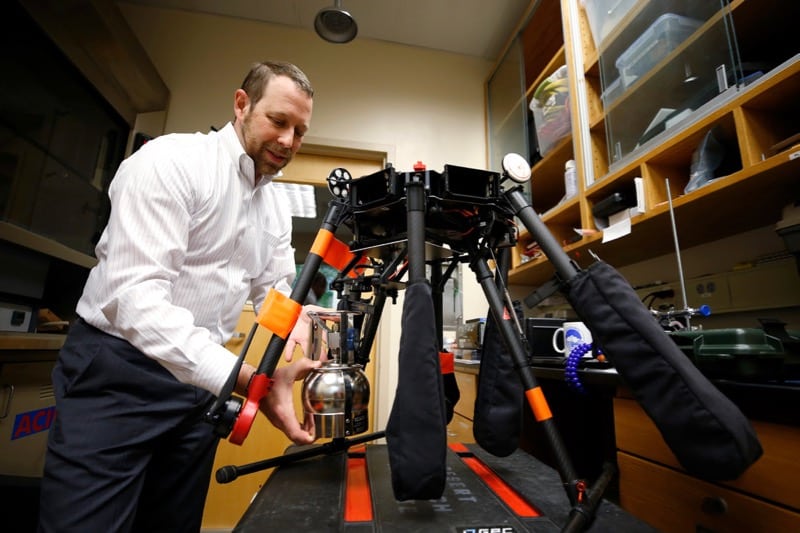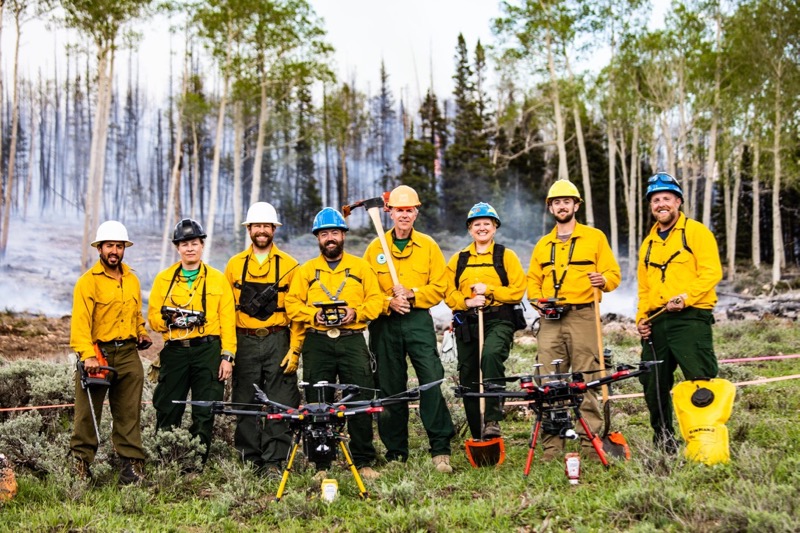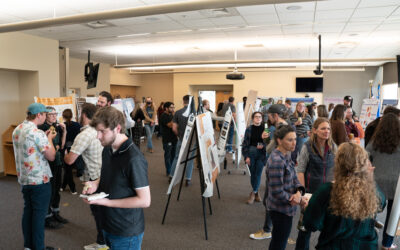Fire science research using drone technology at DRI
“It was sort of like a deep-sea exploration, with a submarine scanning the ocean floor,” said DRI research technician Jesse Juchtzer. “We’d never flown into a smoke plume above a fire like this, no one has. We really didn’t know what we’d find.”
Juchtzer and a team of DRI researchers, along with nearly 35 other scientists, embarked on a unique kind of camping trip this June. The group spent several days and nights in a remote area of central Utah’s Fishlake National Forest to do something that’s never been done before: to light 2000 acres of forest on fire and conduct the biggest prescribed fire experiment yet attempted.
Led by the U.S. Forest Service, the Fire and Smoke Model Evaluation Experiment (FASMEE) has been years in the making. Tim Brown, Ph.D., Research Professor of Climatology at DRI and Director of the Western Region Climate Center, began collaborating on the project with colleagues at the USFS Pacific Northwest Research Station in 2013, with the idea of giving scientists the unprecedented opportunity to collect a range of data before, during, and after a large wildland fire.
Today, the project has evolved to bring together researchers from several universities and government agencies, including NASA and the EPA, in order to study fire from as many angles as possible, like the characteristics of the burning fuels, the chemistry of the smoke plume, fire behavior, and more. Roger Ottmar, Ph.D., Research Forester with the U.S. Forest Service and FASMEE lead, says the diversity of expertise is essential to the project’s goals.
“This is multi-agency and multi-organizational because we’re trying to collect not just smoke or soil but an entire suite of data that can be used to both evaluate and advance the fire and smoke models we use now,” Ottmar explained.
Fire managers rely on models to make critical on-the-ground decisions, like who to evacuate and when, where to allocate resources on the fire line, and when to issue air quality warnings, to name just a few. However, fires are changing, and the tools designed understand them aren’t keeping up.
“As fires get bigger and more destructive, we’re finding that the tools scientists and resource managers use to understand fires and predict their behavior are becoming inadequate,” explained Adam Watts, Ph.D., Associate Research Professor and director of DRI’s Airborne Systems Testing and Environmental Research (ASTER) Lab. “We need to develop the next generation of tools to help us understand modern wildfires, and that’s what this project aims to achieve.”

Adam Watts, PhD, outfits a drone in the ASTER laboratory with a custom air sampling canister. Credit Cathleen Allison/Nevada Momentum.
The DRI team, which included Watts and Juchtzer along with Dave Vuono, Patrick Melarkey, and David Page, deployed unmanned aircraft systems (UAS, or drones) outfitted with scientific instruments over the fire as it burned. This is precisely the specialty of the ASTER lab: developing and refining scientific equipment, installing it on DRI’s UAS fleet, and deploying them in challenging environments like wildland fires.
For this FASMEE burn, the DRI team’s particular focus, among the many research areas explored in the project, was to better understand the chemical and biological components of smoke. To study these elements, DRI collaborated with the EPA and the University of Idaho to fly custom air quality sensors and samplers above and inside the smoke plume.
This research burn allowed the team to not only collect valuable data but also run critical tests of their equipment. The task of getting the UAS loaded with scientific instruments off the ground and into the hot column of smoke was a daunting technical challenge. When asked how this UAS flight compared to others he’s piloted in the past, DRI field technician Patrick Melarkey just laughed.
“It was like night and day,” he said. “During the flight, they’d say, okay, see that dark, black part [of the smoke plume]? Fly into that.”
Now that the burn is over, researchers have returned to the lab to analyze samples and make the necessary updates to their equipment. Though this project was the first of its kind, Watts says it’s definitely not the last.
“In the future, I expect that we’ll incorporate even more sophisticated science teams and work to develop more innovative equipment to collect data,” he explained. “This work is essential if we’re going to create the next generation of tools to help us cope with modern, extreme fires.”
The team will be heading back to central Utah later this year for the next FASMEE research burn. Stay tuned for updates about the project this fall!

The DRI-led team at the June burn included (from left) Dave Vuono, Johanna Aurell of the UNiversity of Dayton Research Institute, Adam Watts, Dave Page, Brian Gullet of the Environmental Protection Agency, Leda Kobziar of the University of Idaho, Patrick Melarkey, and Jesse Juchtzer. Credit: Dave Vuono/DRI.


